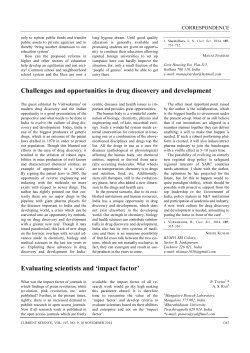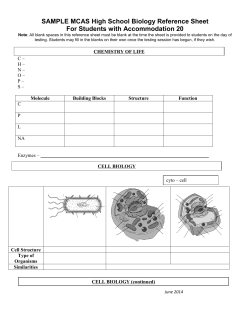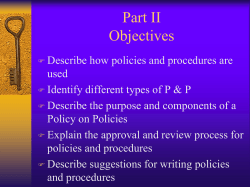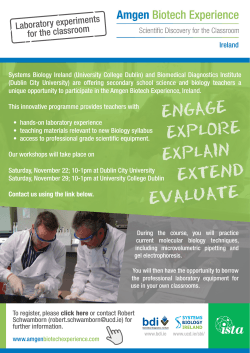
split up syllabus class x - Kendriya Vidyalaya Chabua
KENDRIYA VIDYALAYA SANGHATHAN REGIONAL OFFICE: TINSUKIA SPLIT UP SYLLABUS CLASS X ENGLISH SPLIT-UP SYLLABUS OF CLASS X (2014-15) 1st Term S.No 1 Month April 2 May & June 3 4 July August 5 September 1 2 3 Topic 1. Two Gentlemen of Verona ( Prose) 2. The Frog and the Nightingale (Poem) 3. Grammar(Determiners, Tenses) Writing Skills Informal letter 4.Novel(Helen Keller (1,2 & 3 Chapters) 7 7 1. Mrs Pakletide's Tiger(Prose) 2. The Mirror (Poem) 3. Grammar( Verb Agreement) 4.Novel(Helen Keller (4 & 5 Chapters) 5 2 3 4 1.Health and Medicine (MCB) 2. Dear Departed (Drama) 3. Grammar ( Non-finites and Relatives) 4. Writing Skills (E-mail,Message,Diary Entry) 5.Novel(Helen Keller (6,7 & 8 Chapters) 8 7 4 5 5 1. The Letter (Prose) 2. Education (MCB) 3.Not Marble, nor the Gilded Movements (Poem) 4. Grammar (Connectors and Conditionals) 5. Writing Skills (Dialogue Writing and Debate) 6.Novel(Helen Keller (9,10 & 11 Chapters) 6 8 3 3 4 4 1. Science (MCB) 8 2. Writing Skills(Advertisement and Process Descrption) 2 3.Novel(Helen Keller (12,13 & 14 Chapters) 4 ENGLISH SPLIT-UP SYLLABUS OF CLASS X (2014-15) 2nd Term 1. A Shady Plot (Prose) 2. Ozymandias (Poem) October 3. Julius Caesar ( Drama) 4. Grammar(Comaparision,Avoiding repetatition) Writing Skill Formal Letter 5.Novel(Helen Keller (15 &16 Chapters) 1. Environment (MCB) 2. Patol Babu (Prose) November 3. The Rime of the Ancient Mariner (Poem) 4. Grammar(Nominilization,Modals) 5. Writing Skills ( Formal Letters,Report Writing, Poster Making) 6.Novel(Helen Keller (17 &18 Chapters) December No. of Periods 7 7 1. Virtually True (Prose) 3 4 4 4 3 7 4 4 3 3 3 6 4 January 2. Travel and Tourism (MCB) 3. Grammar(Active ,Passive Voice,Reported Speech) 4. Writing Skills (Article Writing , Notice Writing) 5.Novel(Helen Keller (19 & 20 Chapters) 5 4 4 4 1. National Integration (MCB) 7 2. Snake (Poem) 3 3. Grammar(Pre-positions) 4 4. Writing Skills (Diary Entry,Formal Letter (Editor)) 4 5.Novel(Helen Keller (21,22 & 23 Chapters) 4 Note : Suggested break-up of units for Grammar is for the purpose class room teaching only - NOT FOR TESTING (refer to page no.83) SPLIT UP SYLLABUS (2014-15) SCIENCE CLASS X TERM I S.N o Month 1 Branch of Science Physics Chapter No & Chapter 12. Electricity April 1.chemical reactions Chemistry nature and behavior 2 May & June Biology 6. Life process Physics 12. Electricity (Contd.) 1.chemical reactions Chemistry nature and behavior (Contd.) Biology 7. Control and coordination in animals and Detailed Split-up Electric current, potential difference and electric current. Ohm's law; Resistance, Resistivity, Factors on which the resistance, of a conductor depends. Series combination of resistors, parallel combination of resistors and its applications in daily life Chemical reactions : Chemical equation, Balanced chemical equation, implications of a balanced chemical equation, types of chemical reactions : combination, decomposition, displacement, double displacement, Living Being. Basic concept of nutrition, respiration, transport and Excretion in plants and animals. Heating effect of electric current and its applications in daily life. Electric power, Interrelation between P, V, I and R Precipitation, neutralization, oxidation and reduction. Periods for class room Teaching Computer Aided Teaching Periods Total No.of Period s 8 2 10 6 2 8 4 2 6 3 1 4 2 1 3 2 1 3 Tropic movements in plants(Introduction) plants( Introduction) 3 Physics July 2.Acids, Chemistry bases and salts Biology 4 13.Magnetic Effects of Currents Physics 7. Control and coordination in animals and plants 13.Magnetic Effects of Currents (Contd.) 14.Sources of energy August 2. Acids, Chemistry bases and salts (Contd.) 5 Magnetic field, field lines, field due to a current carrying conductor, field due to current carrying coil or solenoid; Force on current carrying conductor, Fleming’s Left Hand Rule. Electromagnetic induction Their definitions in terms of furnishing of H+ and OH– ions, General properties, examples and uses, concept of pH scale(Definition relating to logarithm not required), importance of pH in everyday life 8 2 10 6 1 7 6 2 8 6 2 8 2 1 3 preparation and uses of sodium hydroxide, Bleaching powder, Baking soda Washing soda and Plaster of Paris 4 1 5 Introduction to plant hormones; Tropic movements in plants control and coordination in animals : nervous system; voluntary, involuntary and reflex action Induced potential difference, Induced current. Fleming's Right Hand Rule, Direct current. Alternating current: frequency of AC. Advantage of AC over DC. Domestic electric circuits Sources of energy : Different forms of energy, conventional and non-conventional sources of energy Chemistry 3.Metals and non metals Properties of metals and non-metals, reactivity series, 2 1 3 Biology 7. Control and coordination in animals and plants Chemical co-ordination: animal hormones. 2 1 3 Physics 14.Sources of energy (Contd.) Fossil fuels, Solar Energy, Bio Gas, Wind, Water and Tidal energy, Nuclear energy, Renewable versus Nonrenewable sources. 4 1 5 3 1 4 4 2 6 September Chemistry 3. Metals and non metals (Contd.) Biology /Chem/Phy Formation and properties of ionic compounds, basic metallurgical processes, corrosion and its prevention. Revision for SA1 SPLIT UP SYLLABUS (2014-15) SCIENCE CLASS X (TERM II) 6 Physics 10.Light:Refl ection & Refraction October 4. Carbon & Chemistry itsCompound s 7 November Biology 8. Reproduction Physics 10.Light:Refl ection & Refraction ( contd.) 4. Carbon & its Chemistry Compounds (Contd.) 8 December 9 January Biology 8. Reproduction ( contd.) Biology 9. Heredity and Evolution 11. Human eye & Physics Colourful World 5. Periodic Chemistry classification of elements Biology 9. Heredity and Evolution (Contd.) 11. Human eye & Physics Colourful World ( contd.) 5. Periodic classification Chemistry of elements ( contd.) 9. Heredity Biology and Evolution (Contd.) Reflection of light by curved surfaces, Images formed by spherical mirrors, centre of curvature, principal axis, principal focus, focal length, mirror formula (Derivation not required), magnification Carbon compounds : Covalent bonding in carbon compounds. Versatile nature of carbon. Homologous series. Nomenclatureof carbon compounds containing functional groups (halogens, alcohol, ketones, aldehydes, alkanes and alkynes), Reproduction in animals and plants (asexual and sexual), Refraction ,Laws of refraction, Refractive index,Refraction of light by spherical lenses,Image formedf by spherical lenses Lens Formula,(Derivation not required),Magnification ,Power of a lens. difference between saturated hydrocarbons and unsaturated hydrocarbons. Chemical properties of carboncompounds (combustion,oxidation, addition and substitution reaction). Ethanol and Ethanoic acid (only properties and uses), soaps and detergents. reproductive health-need and methods of family planning, Safe sex vs HIV/AIDS.Child bearing and women,s health. Heredity; Accumulation of variations,Mendel's contribution- Laws for inheritance of traits: Sex determination. 4 1 5 4 1 5 5 1 6 6 1 7 5 1 3 1 4 4 1 5 Functioning of a lens in human eye, Defects of vision and their correction, Applications of spherical mirrors & lenses. 4 1 5 Need for classification, Modern periodic table, Brief introduction Basic concepts of evolution 5 1 6 5 1 6 Refraction of light through a prism, dispersion of light, scattering of light, applications in daily life. 5 1 6 gradation in properties, valency, atomicnumber, metallic and non-metallic properties 6 2 8 7 2 9 Basic concepts of evolution (Contd.) 6 Biology 10 Physics February Chemistry 15. Our environment Revision Revision Biology 15. Our environment (Contd.) Biology 16. Management of natural resources Eco-system, Environmental problems, Ozone depletion, waste production and their solutions. Biodegradable and non-biodegradable substances Physics & Biology Chemistry & Biology Biodegradable and non-biodegradable substances Conservation of natural resources, Management of natural resources, Conservation and judicious use of natural resources. Forest and wild life, coal and petroleum conservation. Examples of people's participation for conservation of natural resources. Regional environment: Big dams: advantages and limitations; alternatives, if any. Water harvesting. Sustainability of natural resources. 2 0 2 5 6 1 0 6 6 2 0 2 6 2 8 SCIENCE CLASS X Practical First Term 1 April 2 July August 3 Physics 5. Ohm's Law verification 1. To find the Chemistry pH 8. To observe the structure Biology of stomata 6. To verify Law of Series combination Physics of resistances 2. To study the properties of acids and Chemistry bases 9. Light is essential for Biology photosynthesi s 7. To verify Law of Parallel combination Physics of resistances 3. Classification of chemical Chemistry reactions To study the dependence of potential difference (V) across a resistor on the current (I) passing through it and determine its resistance. Also plot a graph between V and I To find the pH of the following samples by using pH paper/universal indicator: To prepare a temporary mount of a leaf peel to show stomata. ( Demonstration and Hands on Experiment) To determine equivalent resistance of 2 resistors when connected in series. To study the properties of acids and bases (HCl & NaOH) To show experimentally that light is necessary for photosynthesis. To determine equivalent resistance of 2 resistors when connected in parallel. 1 1 2 1 2 1 1 2 To perform,classify and observe the chemical reactions 4. Reactivity To observe the action of Zn, Fe, Cu and Al series metals 1 Biology 10. Release of CO2 during Respiration To show experimentally that carbon dioxide is given out during respiration. Second Term 4 October 4. focal length of concave mirror & convex Physics lens 1. properties Chemistry of acetic acid Biology 5 November 6 December 5. Refraction through a Physics glass slab 2. Chemistry saponification 10. Reproduction Biology in organisms 7. Refraction through a Physics glass prism 3. To compare cleaning capacity of a sample of Chemistry soap Biology January 7 8 February 6. Reproduction in organisms 9. Evidences of Evolution 8. Nature of image of a Physics convex lens. Chemistry revision Biology revision Practicals revision with Physics test Practicals revision with Chemistry test Practicals revision with Biology test To determine the f of concave mirror & convex lens by obtaining image of distant object To study the following properties of acetic acid To study (a) binary fission in Amoeba, and (b) budding in yeast with the help of prepared slides 1 2 1 Refraction through a glass slab for different angles of incidence To study saponification reaction for preparation of soap To identify the different parts of an embryo of a dicot seed ( Pea, gram or red kidney bean). 2 To trace the path of light through a glass prism 1 To study the comparative cleaning capacity of a sample of soap in soft and hard water. To study homology and analogy with the help of models/charts of animals and models/charts/specimens of plants. To find the image distance for varying object distances in case of convex lens and to draw ray digrams to show the nature of image formed. revision revision 1 1 1 2 1 1 1 1 Practical’s revision with test 1 Practical revision with test 1 Practical revision with test CLASS-X TERM-I (APRIL TO SEPTEMBER 2014-15) SOCIAL SCIENCE S.NO MONTH NAME OF THE LESSONS 1 APRIL/MAY HISTORY : INDUSTRIALISATION 1850’S-1950’S OR URBANISATION AND URBAN LIVES OR TRADE AND GLOBALISATION GEOGRAPHY: 1. RESOURCES AND DEVELOPMENT POL. SC: 1. POWER SHARING MECHANISM IN DEMOCRACY 2. FEDERALISM HISTORY: PRINT CULTURE AND NATIONALISM OR HISTORY OF NOVEL ECONOMICS: DEVELOPMENT STORY GEOGRAPHY: 1. FOREST AND WILD LIFE RESOURCES POL. SC: 1. WORKING OF DEMOCRACY DEMOCRACY AND DIVERSITY GEOGRAPHY: 1. WATER RESOURCES 2. AGRICULTURE ECONOMICS: SECTORS OF INDIAN ECONOMY POL SCI: 1. GENDER, CASTE AND RELIGION DISASTER MANAGEMENT : SAFE CONSTRUCTION PRACTICE and SHARING RESPONSIBILITY 2 JUNE/JULY 3 AUGUST 4 SEPTEMBER No. of Periods 12 REMARK S ANY ONE 5 4 4 10 ANY ONE 8 6 5 4 5 6 12 5 10 (Only Through Project work & Assignment ) REVISION FOR SA-1 CLASS-X, TERM-II (OCTOBER TO MARCH 2014-15) S.N O 5 MONTH NAME OF THE LESSONS OCTOBER HISTORY : 1.NATIONALISM IN EUROPE (OR) NATIONALIST MOVEMENT IN INDOCHINA POL. SC: 1. POPULAR STRUGGLES AND MOVEMENTS. GEOGRAPHY: 1.MINERALS AND ENERGY RESOURCES GEOGRAPHY: 1. MANUFACTURING INDUSTRIES. ECONOMICS: MONEY AND CREDIT HISTORY: NATIONALISM IN INDIA POL. SC: POLITICAL PARTIES POL. SC: OUTCOMES OF DEMOCRACY ECONOMICS: GLOBALISATION IN INDIAN ECONOMY GEOGRAPHY:LIFELINES OF NATIONAL ECONOMY POL. SC: CHALLENGES TO DEMOCRACY FA -III 6 NOVEMBE R 7 DECEMBE R 8 JANUARY 9 10 FEBRUARY ECONOMICS: CONSUMER RIGHTS DISASTER MANAGEMENT : SURVIVAL SKILLS (Only Through Project work & Assignment ) REVISION FOR SA-II MARCH SA-II EXAMS No. of Periods 12 REMAR KS ANY ONE 6 8 7 8 11 5 6 9 8 6 8 10 क ा दसवीं हंद ‘अ’ पा य म व नदशन थम स X 2014-2015 म0 स0 1 2 माह पा य पु तक अ ल ै – ग य प य नेताजी का सरू दास (6) बाल गो बन भगत (6) ---------- दे व.....(5) माता का अँचल (5) ----------- --------- च मा (6) मई एवं जून कृ तका याकरण कालांश 28 रचना के आधार पर 11 वा य भेद, अप ठत ग यांश, प यांश, नबंध, प लेखन(11) 2 3 जल ु ाई लखनवी अंदाज़ (6) आ मक य, (6) अग त मानवीय क णा अट नह ंरह (3) क द य चमक (6) उ साह (4) जाज पंचम क नाक (4) यह द तु रत रस(9) 29 पद प रचय, (9) 24 सार – लेखन(4) 21 मु कान ( 3) फसल (3) 4 सत बर पन ु राव ृ त क ा दसवीं हंद ‘अ’ म0 स0 5 6 7 8 वतीय स X माह ग यांश प यांश अ तब ू र एक कहानी यह भी (7) राम – ल मण अप ठत ग यांश, संवाद (8) लेखन (3) नव बर दस बर ी श ा के वरोधी कुतक का खंडन (7) कृ तका – परशरु ाम छाया मत छूना (4) क यादान (3) नौबतखाने म इबादत (6) कालांश 18 प यांश, नबंध, प साना – साना हाथ जोडी(4) संगतकार (4) ए ह ं ठै यां झुलनी जनवर याकरण है रानी हो रामा (8) रचना के आधार पर 24 पद – प रचय, रस(10) 20 वा य भेद, वा य (6) सार – लेखन (4) 24 म य लखता हूँ (8) 9 फरवर पन ु राव ृ त 10 माच पन ु राव ृ त एवं स ांत पर 26 ा 28 सततं ापकं मू या कनम् – २०१४ -१ क ा – दशमी सं कृ त पा म िवभाजनम् ( सं े णा मकम् ) १२२ क ा – दशमी मास य नाम कालां शाः अ ैल २४ मई – जून् १० जलाई िवषयः सं कृ तम् प ठत अवबोधनम् थम स म् ( अ ैलतः – िसत बरमासपय तम् ) रचना मकं कायम् अनु यु अप ठत अवबोधनम् ाकरणम् १. वा यं तपः २.आ ा गु णां िह अिवचारणी या ३. क क उपादेयम् प लेखनम् िच ाधा रतं कायम् दीघसि धः गुणसि धः वृि ः नसि धः – परसवण , छ व , तुकागमसि धः िवसगसंिधः – िवसग य उ वं , र वं अप ठतग ांशः प लेखनम् िच ाधा रतं कायम् त पु षः – ( िवभि ः , नञ् , उपपदत पु षः ) कमधारयः ि गु समासः अप ठतग ांशः २५ ४.नाि त यागसमं सुखम् प लेखनम् िच ाधा रतं कायम् कृ द त ययाः – त त् , अनीयर् ति त ययाः - मतुप् , इन् , ठक् अप ठतग ांशः अग त २२ ५.अ यासव शगं मनः प लेखनम् िच ाधा रतं कायम् िसत ब र २३ पुनरावृि ः क ा – दशमी अ यपदानां योगः अप ठतग ांशः अिप, इव , उ ैः , एव , नूनं , पुरा, इत ततः , अ – त , इदानीम् , यथा – तथा , िवना सहसा , अधुना, वृथा शनैः पुनरावृि ः अ कानां थाने श देषु समय लेखनम् पुनरावृि ः पुनरावृि ः क ा – दशमी सततं ापकं मू या कनम् – २०१४ -१५ िवषयः सं कृ तम् प ठत अवबोधनम् रचना मकं कायम् अ ू बर १६ साधुवृ समाचरे त् रमणीया िह सृि रे षा प लेखनम् िच ाधा रतं कायम् यण् , अया द सि धः , पूव प अप ठतग ांशः सि धः अनु वार – वग य थमा राणां तृतीयवण प रवतनं , थमवण य प मवण प रवतनम् नव बर २२ ित कु रल् सूि सौरभम् प लेखनम् िच ाधा रतं कायम् १९ रा ं संर यमेव प लेखनम् िच ाधा रतं िवसगसि धः – लोप , िवसग य थाने स्, श् , ष् समासः समासः , ब ीिह समासः , अ यीभाव समासः ययाः कृ द ताः – शतृ – शानच् दस बर रचना मकं मू या कनम् -२ FA – 2 संकला मकं मू या कनम् – १ SA -1 ( अ ैलतः अग त पय तम् ) ि तीय स म् ( अ ू बरतः – माचमासपय तम् ) कालां शाः मास य नाम पा म य पूणता एवं िववरणं च रचना मकं मू या कनम् -१ ( ४० अ काः ) FA – 1 अ ैलतः जून् पय तम् ) पा मः अनु यु ाकरणम् अप ठत अवबोधनम् अप ठतग ांशः अप ठतग ांशः पा म य पूणता एवं िववरणं च रचना मकं मू या कनम् - ३ ( ४० अ काः ) FA – 3 अ ू बरतः दस बर पय तम् ) पा मः रचना मकं मू या कनम् – ४ FA – 4 संकला मकं मू या कनम् – १ SA -2 ( अ ू बरतः माच पय तम् ) िह सु वागतं भो अ णाचलेऽ ि मन् कायम् ति ताः – व , तल् ी ययौ – टाप् , ङीप् वचन –िल ग – पु ष – लकार दृ ा संशोधनम् अ यािन –इित, कदा , कु तः , मा , यत् ,य त , यदा कदा , यावत् , ः , ः , बिहः ,कदािप , कमथ सं या एकतः प पय तम् वा येषु योगः | एकतः शतं पय तं सं या ानम् अप ठतग ांशः पुनरावृि ः / परी ा – SA -2 पुनरावृि ः जनवरी २४ कालोऽहं प लेखनम् िच ाधा रतं कायम् फरवरी २२ पुनरावृि ः पुनरावृि ः माच १२ पुनरावृि ः पुनरावृि ः CLASS-X S.N O Month Units / Chapters Mathematics (041) पुनरावृि ः TERM 1 Total No. of Detailed Split-up Syllabus Periods 1 1.Real Numbers APRIL & MAY 2. PAIR OF LINEAR EQUATIONS IN TWO VARIABLES 2 1. Polynomials JUNE & JULY 2. TRIANGLES Units / Chapters Real Numbers . Euclid's division lemma, Fundamental Theorem of Arithmetic - statements after reviewing work done earlier and after illustrating and motivating through examples, Proofs of results irrationality of √2, √3, √5, decimal expansions of rational numbers in terms of terminating/non-terminating recurring decimals PAIR OF LINEAR EQUATIONS IN TWO VARIABLES Pair of linear equations in two variables and their graphical solution. Geometric representation of different possibilities of solutions/inconsistency. Algebraic conditions for number of solutions. Solution of a pair of linear equations in two variables algebraically – by substitution, by elimination and by cross multiplication method. Simple situational problems must be included. Simple problems on equations reducible to linear equations may be included Two skill based Math’s Lab activities / Project . Polynomials Zeroes of a polynomial. Relationship between zeroes and coefficients of quadratic polynomials. Statement and simple Problems on division algorithm for polynomials with real coefficients. TRIANGLES Definitions, examples, counter examples of similar triangles. 1. (Prove) If a line is drawn parallel to one side of a triangle to intersect the other two sides in distinct points, the other two sides are divided in the same ratio. 2. (Motivate) If a line divides two sides of a triangle in the same ratio, the line is parallel to the third side. 3. (Motivate) If in two triangles, the corresponding angles are equal, their corresponding sides are proportional and the triangles are similar. 4. (Motivate) If the corresponding sides of two triangles are proportional, their corresponding angles are equal and the two triangles are similar. 15 15 7 15 JUNE & JULY 3.TRIGONOM ETRY 3 1. TRIGONOME TRY (Contd.) AUGUST 2. STATISTICS 4 1.STATISTIC S SEPTEM BER 5. (Motivate) If one angle of a triangle is equal to one angle of another triangle and the sides including these angles are proportional, the two triangles are similar. 6. (Motivate) If a perpendicular is drawn from the vertex of the right angle of a right triangle to the hypotenuse, the triangles on each side of the perpendicular are similar to the whole triangle and to each other. 7. (Prove) The ratio of the areas of two similar triangles is equal to the ratio of the squares on their corresponding sides. 8. (Prove) In a right triangle, the square on the hypotenuse is equal to the sum of the squares on the other two sides. 9. (Prove) In a triangle, if the square on one side is equal to sum of the squares on the other two sides, the angles Opposite to the first side is a right triangle. INTRODUCTION TO TRIGONOMETRY Trigonometric ratios of an acute angle of a right-angled triangle. Proof of their existence (well defined); motivate the ratios, whichever are defined at 0o and 90o. Values (with proofs) of the trigonometric ratios of 30o, 45o and 60o. Relationships between the ratios Two skill based Math’s lab activities /Project. Formative assessment-1 . 1. TRIGONOMETRIC IDENTITIES Proof and applications of the identity sin2 A + cos2 A = 1. Only simple identities to be given. Trigonometric ratios of Complementary angles. 2. STATISTICS Mean, median and mode of grouped data (bimodal situation to be avoided) cumulative frequency graph. Two skill based Math’s Lab Activities/Projects 1. STATISTICS ---- Cumulative frequency graph. 2. Revision for SA– I 2.Revision FOR SA1 10 15 13 5 MATHEMATICS (041) (2014-15) CLASS-X TERM II S.N O Units / Chapters Month Detailed Split-up Syllabus Total No. of Periods 1 October 1.ARITHMETIC PROGRESSIONS 1)Motivation for studying AP. Derivation of standard results of finding the nth term and sum of first n terms and their application in solving daily life problems 2.QUADRATIC EQUATIONS 2) Standard form of a quadratic equation ax2 + b x +c= 0, (a ≠≠ 0). Solution of the quadratic equations (only real roots) by factorization, by completing the square and by using quadratic formula. Relationship between discriminated and nature of roots. Problems related to day to day activities to be incorporated. 8 15 Two skill based Math’s Lab activities/Projects Tangents to a circle motivated by chords drawn from points coming closer and closer to the point.1. (Prove) The tangent at any point of a circle is perpendicular to the radius through the point of contact.2. (Prove) The lengths of tangents drawn from an external point to circle are equal. 1. Division of a line segment in a given ratio (internally) 2. 2. Tangent to a circle from a point outside it. CONSTRUCTIONS 3. Construction of a triangle similar to a given triangle 1.) The area of a circle; area of sectors and segments of a circle. 3.AREAS Problems based on areas and perimeter / circumference of the above RELATED TO CIRCLES said plane figures. (In calculating area of segment of a circle, problems should be restricted to central angle of 60o, 90o& 120o only. Plane figures involving triangles, simple quadrilaterals and circle should be taken 1. 2 Novembe r CIRCLES 8 8 12 Two skill based Math’s Lab Activities/Project 1. SURFACE AREAS AND VOLUMES Decembe r 2. HEIGHTS AND DISTANCES 3 1 PROBABILITY January 1. (i) Problems on finding surface areas and volumes of combinations of any two of the following: cubes, cuboids, spheres, hemispheres and right circular cylinders/cones. Frustum of a cone. (ii) Problems involving converting one type of metallic solid into another and other mixed problems. (Problems with combination of not more than two different solids be taken.) 1. Simple and believable problems on heights and distances. Problems should not involve more than two right triangles. Angles of elevation / depression should be only 30o, 45o, 60o 8 Two skill based Math’s Lab Activities/Projects 1. Classical definition of probability. Connection with probability as 10 given in Class IX. Simple problems on single events, not using set notation. 2. LINES (In two-dimensions) Review the concepts of coordinate geometry done earlier including graphs of linear equations. Awareness of geometrical representation of quadratic polynomials. Distance between two points and section formula (internal). Area of a triangle. Two skill based Math’s Lab Activities/Projects 2.COORDINATE 12 14 GEOMETRY February March REVISION FOR SA 2 Revision for SA2 SA2
© Copyright 2025









